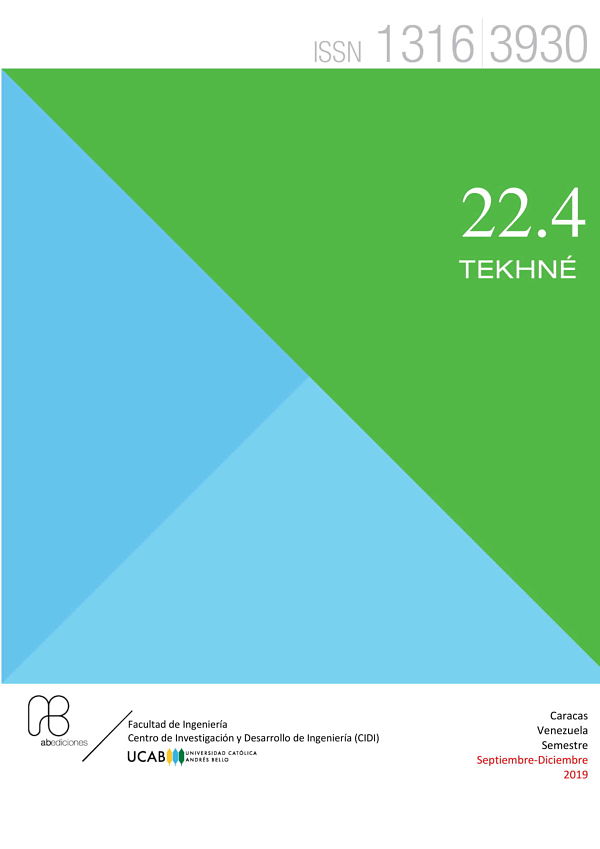Evaluation of the mechanical properties of the Venezuelan Guadua Angustifolia Kunth
Evaluación de las propiedades mecánicas de la Guadua Angustifolia Kunth venezolana
DOI:
https://doi.org/10.62876/tekhn.v22i4.4372Keywords:
Abstract
Test tubes from different sections of Guadúa Angustifolia Kunth culms were tested. The tests were in compression parallel to the fiber and in flexion for the upper, middle and lower areas of the culms. It is evident that the upper areas of the culms have the best capacities to resist compressive stresses and show higher compression moduli than the other two sections of the culms. The middle section appears to be the least resistant of all with the lowest compressive stresses and moduli. In general, there is quite a bit of dispersion in the results. There is a relationship between the “effective” thickness or that which does not consider the less resistant fibers towards the interior of the culm section with the increase in tensile strength. This suggests the usefulness of using such effective thickness to estimate engineering parameters instead of the total thickness of the section. The diametral deformation behavior in the middle section of the specimens subjected to compression indicates that many deviations occur from the expected behavior of linear increase of the load with diametral deformation. Both the dispersion and the deviations from the expected behavior seem to be related to the variations of the wood, however, even the smallest values are greater than those found in the literature for other varieties of Guadua. The bending stress tests showed failures in the compression fibers, which corroborates that their capacity at tensile stresses is greater than at compression stresses. Longitudinal cracks can appear without being associated with holes present prior to loading of the material and in general depend on the deformation reached by the original circular section.




